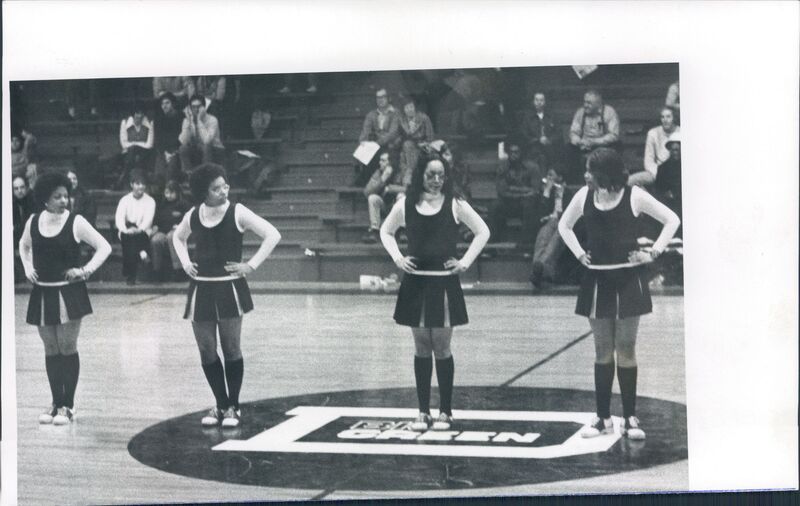Creating Her Own Community
Attending a college in the middle of the woods was quite isolating at times, especially for the first class of women at Dartmouth College. Students were forced to find or create their own communities on campus. In contrast, at neighboring Ivy League institutions, the community outside campus was key to accelerating change. Due to the lack of support from the Upper Valley community (and exclusion in certain Dartmouth spaces) students created their own spaces where they felt comfortable. Karen M. Turner created numerous communities while at Dartmouth. They continued to facilitate change, whether it was the first organization of its time, offered support for affinity groups, or facilitated changes to make minority students feel more comfortable on campus.
Cheerleading
Karen Turner, along with Eileen Cave, Cherel Jackson, and another student created the first cheer squad at Dartmouth College, which was coincidentally composed of all-Black students.
Blackside-WDCR
Through the Interview Karen was very passionate about her time at the WDCR, Dartmouth's radio station. She discussed being the first woman to work at WDCR and noted that when she first joined WDCR, the only space for Black people at WDCR was on a show called Blackside. Karen would later go on to become the minority affairs director for the WDCR.
Creating Meaningful Relationships
Karen M. Turner was referenced before in the interview of Eileen Redding (class of 1976). Each of the narrators throughout the exhibits discussed the importance of the meaningful relationships that they made at Dartmouth. These relationships tend to be more detailed-oriented than their recollections of certain events. Her main group was called the "S-S-S," which stood for "Sinister Sisters of the Syndicate."

